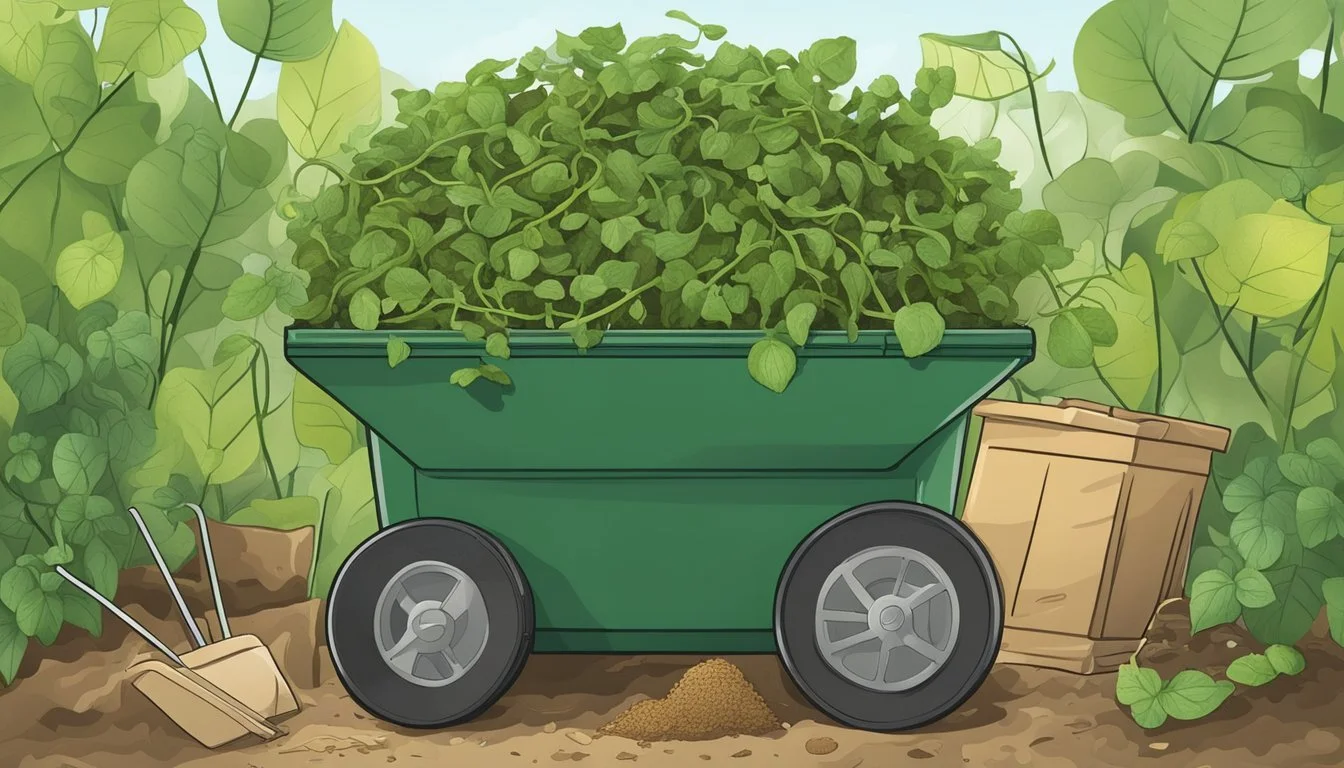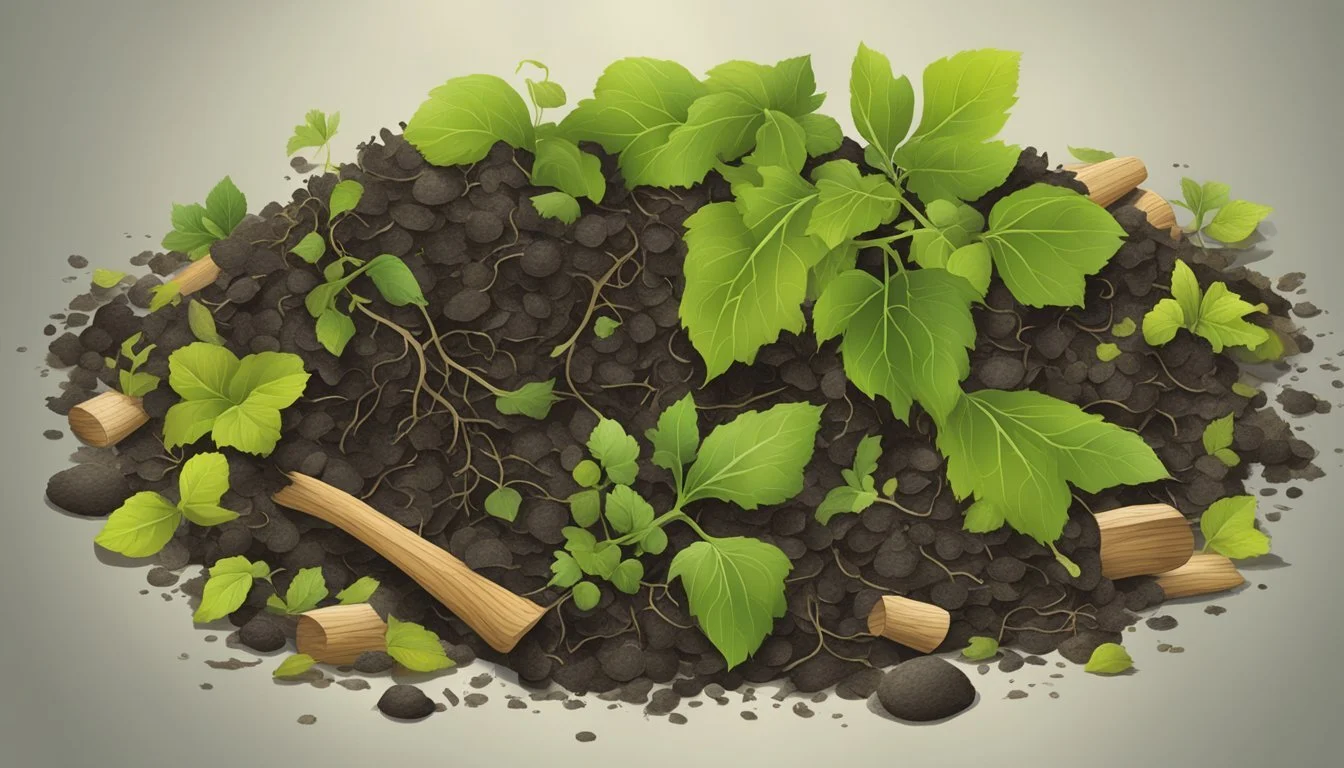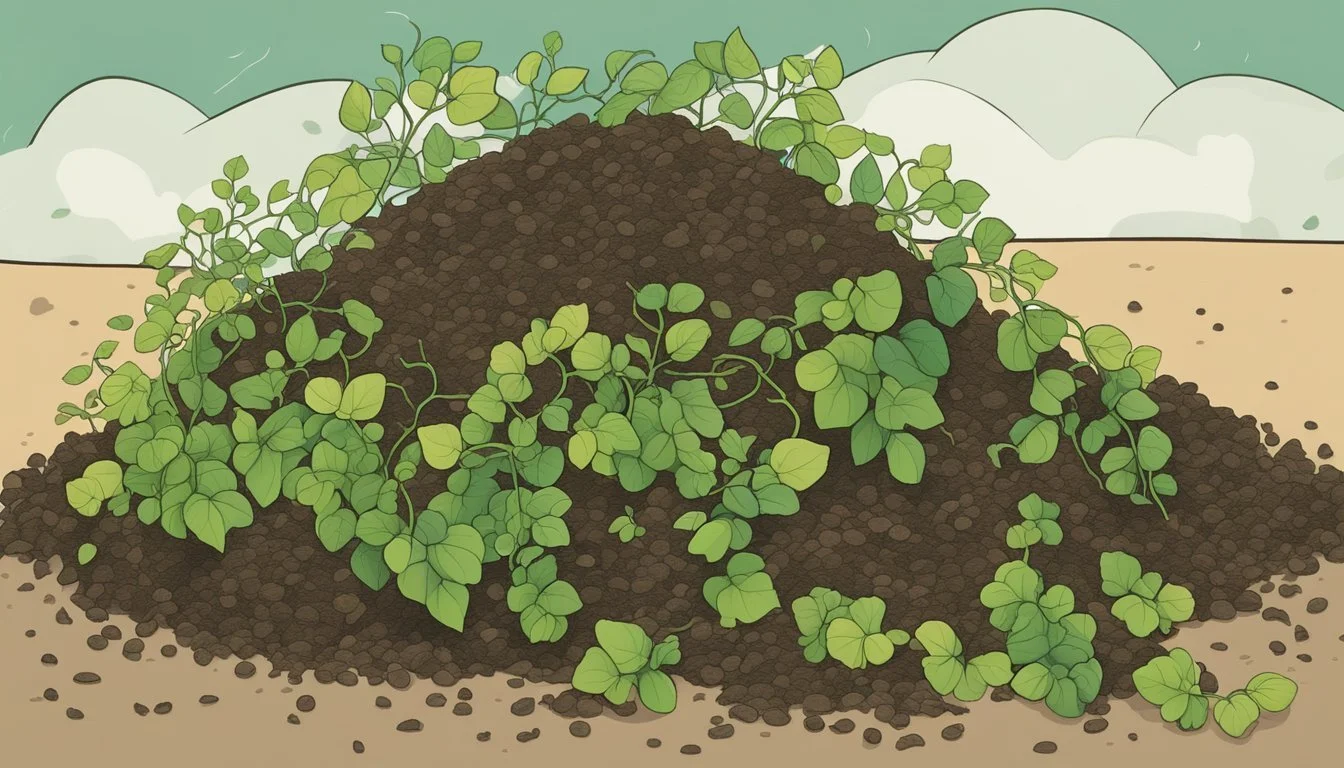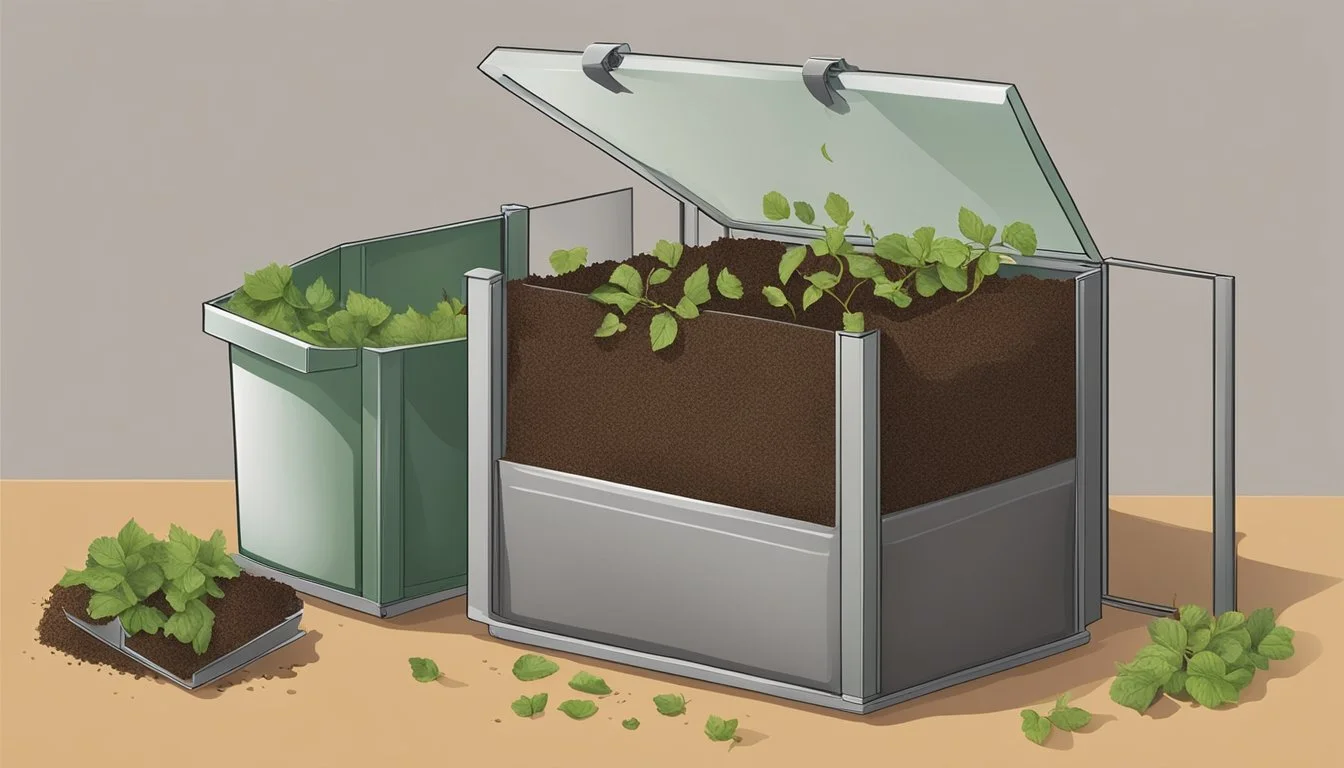Can You Compost Vine Clippings?
Understanding the Process
Composting vine clippings can be an effective way to reduce waste and enrich garden soil with organic material. Vine clippings, like other green plant waste, are generally suitable for composting because they break down relatively quickly and add nitrogen to the compost mix, which is necessary for the decomposition process. However, it is important to be cautious with vines that have gone to seed or those that are prone to spreading aggressively, as these can lead to unwanted growth if not properly managed in a compost pile.
The composting process requires a balance of green (nitrogen-rich) and brown (carbon-rich) materials to create an environment conducive to decomposition. Vine clippings contribute to the green component, but must be balanced with brown materials, such as dry leaves or shredded paper, to prevent a nitrogen-heavy mix which can lead to odors and slower decomposition. Additionally, ensuring that vine clippings are shredded or chopped into smaller pieces can expedite their breakdown and integrate more smoothly into the compost mix.
For gardeners dealing with diseased or pest-infested vines, composting may not be the ideal choice. High temperatures achieved in hot composting can eliminate most pathogens and seeds, but this requires careful management of the compost pile to ensure sustained high temperatures throughout. For those unable to guarantee these conditions, it may be safer to dispose of problematic vine clippings through other means to prevent the risk of spreading issues throughout their garden.
Understanding Composting Basics
Before diving into the specifics of vine clippings, one must grasp the essentials of composting. This fundamental process is crucial for those looking to enrich their soil sustainably while contributing to a healthier environment.
What Is Composting?
Composting is the natural process whereby microorganisms break down organic matter into a rich soil amendment. The decomposition process transforms a variety of organic materials like leaves, vegetable scraps, and, of course, vine clippings, creating a nutrient-dense substance known as compost. It involves a diverse community of bacteria, fungi, and other decomposers that work collectively to recycle the organic matter.
Organic Matter: Includes fruit and vegetable waste, leaves, shredded paper, etc.
Microorganisms: The decomposers, such as bacteria and fungi, that aid in decomposition.
Benefits of Composting
Composting offers multiple advantages not only to one's garden but also to the larger environment:
Soil Health: Compost improves soil structure, texture, and aeration. This helps the soil retain moisture and resist erosion.
Nutrients: It provides essential nutrients to plants, acting as a natural fertilizer.
Environment: By composting, one reduces landfill waste and produces a sustainable resource, minimizing the environmental footprint.
Sustainable Practices: Promotes recycling of organic waste and reduces reliance on chemical fertilizers.
The result of effective composting is a promotion of healthier plants and a notable contribution to environment sustenance.
Components of a Compost Pile
Creating a successful compost pile requires understanding the roles of the different materials involved and how they interact within the composting process. Two essential types of materials, green and brown, play a critical part by providing the necessary nitrogen and carbon.
Green and Brown Materials
Green materials are rich in nitrogen, a key element required by the microorganisms responsible for breaking down compost. These materials are often moist and include items like:
Fruit and vegetable scraps
Coffee grounds
Grass clippings
Plant trimmings
In contrast, brown materials provide carbon, which serves as an energy source for the decomposing organisms. Brown materials typically appear dry and encompass things such as:
Dry leaves
Straw
Newspaper
Wood chips
A compost pile should have a mix of both green and brown materials to maintain proper moisture and promote airflow, which is vital for the composting process.
Balancing Nitrogen and Carbon
The decomposition in a compost pile is most efficient when there is a proper balance between nitrogen-rich green materials and carbon-rich brown materials. This balance is often referred to as the carbon-to-nitrogen ratio (C ratio). While greens are high in nitrogen, browns have a larger carbon content. An ideal ratio for a compost pile is approximately 25-30 parts carbon to 1 part nitrogen. Achieving this ratio ensures:
Optimal microbial activity
Adequate heating of the pile
Preventing odors and pests
To maintain this balance, one should add more brown materials if the compost becomes too wet or smelly, indicating excess nitrogen. Conversely, if decomposition is slow, adding green materials can accelerate the process by increasing nitrogen levels. It's crucial to turn the compost pile periodically to integrate oxygen, another critical component, as it aids in decomposition and prevents material from becoming matted down and anaerobic.
Preparing Vine Clippings for Composting
Composting vine clippings can enhance garden soil but requires proper preparation of the clippings to ensure efficient breakdown. The clippings should be free of chemicals and cut to an optimal size to facilitate their decomposition.
Pre-Treatment of Vine Clippings
Before adding vine clippings to a compost pile, one must ensure they haven't been treated with herbicides or pesticides. These chemicals can persist in the compost and harm beneficial microorganisms or plants later on. It's advisable to let treated clippings degrade for at least a few weeks, and preferably longer, before composting.
If clippings are from diseased plants, they should not be composted. Diseases can endure the composting process and spread when the compost is used in the garden.
Optimal Size for Decomposition
To decompose effectively, vine clippings should be cut or shredded into smaller pieces. Shredding increases the surface area of the material, expediting the composting process.
Small Clippings (< 1/2 inch in diameter): Can be composted directly.
Larger Clippings (> 1/2 inch in diameter): Should be shredded or cut into pieces 6 to 8 inches long.
Smaller pieces mix more evenly with other compost materials, aiding in maintaining a balanced carbon to nitrogen ratio, which is key for efficient decomposition.
The Composting Process
The composting process transforms organic waste, such as vine clippings, into valuable fertilizer through careful management of pile layering, moisture, aeration, and temperature to optimize microbial activity.
Layering Your Compost Pile
A successful compost pile requires proper layering of green and brown materials. For vine clippings, which are considered green materials, they should be interspersed with brown materials - like dry leaves or cardboard - to maintain a balanced carbon-to-nitrogen ratio. The recommended practice is to layer:
Green materials (such as vine clippings, fresh grass, and food scraps) to provide nitrogen.
Brown materials (including dry leaves, branches, and paper) to supply carbon.
This layering process not only feeds the microorganisms that break down the organic matter but also helps in maintaining proper structure and air flow within the bin or pile.
Managing Moisture and Aeration
Compost piles require consistent moisture to support the decomposition process. The pile should feel like a wrung-out sponge, damp but not saturated. Water is crucial, yet over-watering can lead to anaerobic conditions and slow down the composting process.
To ensure optimal aeration, the compost pile needs regular turning. Turning the pile with a shovel or pitchfork once every week or two will:
Introduce oxygen needed by aerobic microorganisms.
Help distribute moisture evenly.
Prevent the development of foul odors.
Temperature and Microbial Activity
The temperature of a compost pile is a telltale sign of the microbial activity within. Thermophilic microorganisms thrive in the heat generated by the decomposing organic matter, propelling the composting process.
The ideal temperature range for an active compost pile is between 90 to 140 degrees Fahrenheit (32 to 60 degrees Celsius).
A compost thermometer can be used to monitor this heat, signifying the activity level of the microorganisms.
Managing these elements ensures that the microbiological processes within the compost pile are active and efficient, turning vine clippings and other organic waste into nutrient-rich compost.
Common Issues and Solutions
When composting vine clippings, one may encounter specific challenges such as odors and pests, as well as diseases and weeds, which require targeted approaches to manage effectively.
Controlling Odors and Pests
Composting vine clippings can occasionally lead to unpleasant odors and attract undesirable pests if not managed properly. These issues often arise from an imbalance in the compost ingredients or inadequate maintenance.
Odors: They are usually the result of anaerobic conditions from excessive moisture and lack of oxygen. To mitigate this, ensure the pile is turned regularly to improve aeration and adjust the green-to-brown ratio by adding more carbon-rich materials like dried leaves or straw.
Pests: Flies, ants, and rodents are common pests that may be attracted to compost bins. Keeping pests at bay involves:
Covering new additions with a layer of soil or browns.
Using a compost bin with a tight-fitting lid or a mesh screen to deter flies.
Maintaining adequate moisture levels to discourage ant infestations, which prefer drier conditions.
Quick Prevention and Management Guide:
Issue Prevention Method Management Strategy Odors Balance green and brown materials. Turn regularly. Add browns, turn the pile, adjust moisture. Pests (Flies) Cover scraps with soil or browns. Use a bin lid. Install mesh, maintain proper moisture levels. Pests (Ants) Ensure moist environment. Cover food scraps. Add moisture, turn pile, cover with soil.
Dealing with Diseases and Weeds
Vine clippings might carry diseases or weeds seeds that can survive the composting process if the pile does not reach sufficient temperatures to kill them off.
Diseases: Fungal and bacterial infections from the original plant can persist if the compost does not reach high enough temperatures. This is typically over 131°F (55°C) for several days.
Weeds: Weed seeds are notorious for their resilience and can sprout in your compost if it isn't hot enough. To prevent this, avoid adding weeds with mature seeds to the pile and turn the compost regularly to encourage uniform heating.
For effective management:
Problem Solution Diseases Achieve and maintain high temperatures. Weeds Avoid adding weeds with seeds. Turn the pile.
By addressing these common issues with vigilance and proper techniques, your composting process can run smoothly, resulting in fertile soil excellent for gardening purposes.
Using Finished Compost
In the realm of gardening, finished compost is a versatile asset that can significantly improve soil quality and contribute to healthy plant growth. It serves as a potent soil amendment and delivers a range of benefits to plants and gardens.
Amending Soil with Compost
Finished compost can be mixed into the topsoil to enhance its structure and fertility. A common method for soil amendment includes:
Mixing Ratio: For optimal results, incorporate compost into the topsoil at a ratio of about 1 part compost to 2 parts existing soil.
Application Depth: Work the compost into the top 6 to 8 inches of soil for beds and vegetable gardens.
This practice increases the soil's water retention capacity and provides essential nutrients, which can reduce the reliance on chemical fertilizers.
Benefits to Plants and Gardens
Utilizing compost presents numerous advantages:
Soil Structure Improvement: Compost improves soil aeration and drainage, making it more hospitable for root growth.
Nutrient-Rich: As a natural fertilizer, compost steadily releases nutrients into the soil, which are readily absorbed by plant roots.
Mulching Material: Applying a layer of compost around plants acts as mulch, suppressing weeds and retaining moisture in the soil.
These enhancements to the soil foster robust plant growth and result in more resilient vegetable gardens and landscapes.
Eco-Friendly Practices
In an effort to reduce yard waste and promote sustainability, eco-friendly practices like grasscycling and the use of mulching mowers have been adopted. These methods complement traditional recycling efforts and divert organic waste from landfills, aiding in a greener environment.
Grasscycling and Mulching Mowers
Grasscycling refers to the practice of leaving grass clippings on the lawn after mowing. These clippings decompose naturally and return valuable nutrients to the soil, cutting down on the need for artificial fertilizers. Mulching mowers enhance this process by finely chopping the grass clippings and distributing them evenly across the lawn, hence encouraging faster decomposition and nutrient absorption.
Benefits of grasscycling and mulching mowers include:
Reduced yard waste, as clippings are not collected.
Improved soil health and moisture retention.
Avoiding Landfills
Diverting vine clippings from landfills is a significant eco-friendly goal, because yard waste can account for a considerable amount of landfill content. Composting provides an alternative to this, transforming garden waste into valuable compost.
Why avoid landfills:
Decreases methane emissions from decomposing organic matter.
Conserves space in landfills for non-compostable waste.
By implementing these practices, gardeners not only contribute to a more sustainable environment but also enhance the health of their lawns and gardens.








